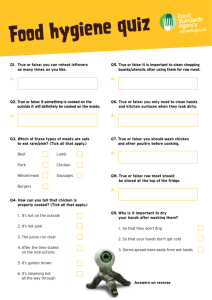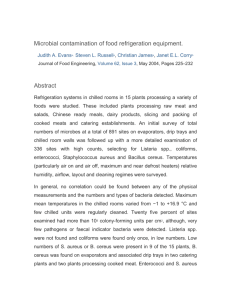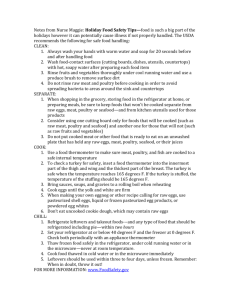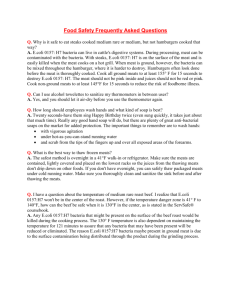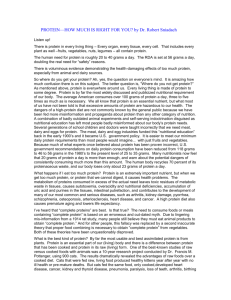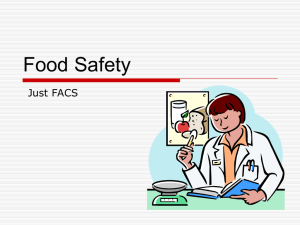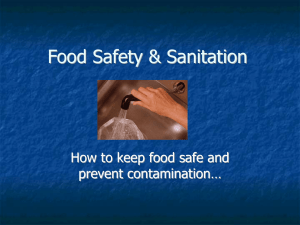Food hygiene quiz
advertisement
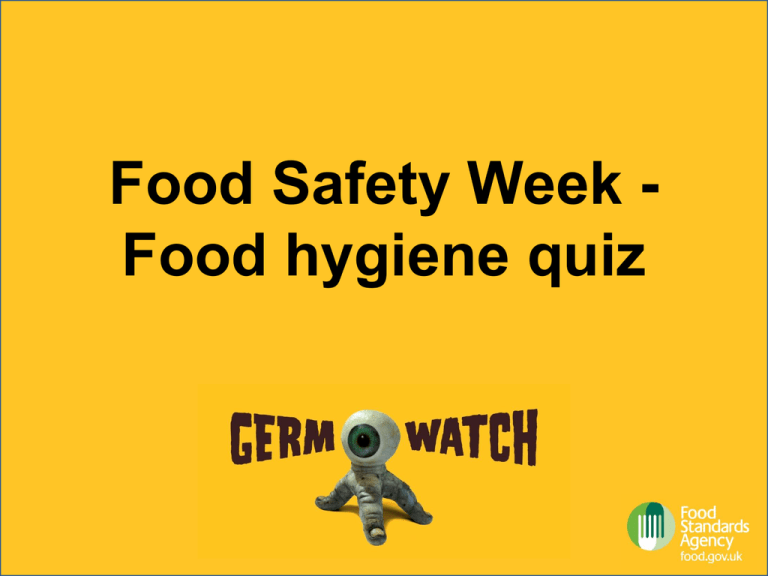
Food Safety Week Food hygiene quiz Question 1 TRUE OR FALSE: You can reheat leftovers as many times as you like. Answer - FALSE You should only reheat leftovers once. The more times you cool and reheat food, the more potential there is for food poisoning – bacteria might grow and multiply because the food is cooled too slowly, and might survive because the food isn’t reheated properly. When you do reheat, make sure that food is reheated thoroughly, so that it is steaming hot all the way through. Question 2 TRUE OR FALSE: If something is cooked on the outside it will definitely be cooked on the inside. Answer - FALSE Most forms of cooking involve heat penetrating the food from the outside, so although the surface may be cooked the centre may not be. It is therefore important to make sure that the food is thoroughly cooked all the way through. Question 3 Which of these types of meats are safe to eat rare/pink? • • • • • • • Beef Pork Lamb Chicken Minced meat Sausages Burgers Answer - Beef and lamb It’s fine to eat steaks and other whole cuts of beef and lamb rare, as long as the outside has been properly cooked or ‘sealed’. Steaks are usually sealed in a frying pan over a high heat. It’s important to seal meat in order to kill any bacteria that might be on the outside. It’s OK to serve beef and lamb joints rare too, as long as the joint is a single piece of meat, not a rolled joint (made from different pieces of meat rolled together). You shouldn’t eat poultry, pork, burgers or sausages rare or pink. This is because these types of meat can have bacteria all the way through them, not just on the outside. So if they aren’t properly cooked then any bacteria in the meat might not be killed. Question 4 How can you tell that chicken is properly cooked? 1. 2. 3. 4. 5. 6. It’s hot on the outside It’s not pink The juices run clear After the time stated on the instructions It’s golden brown It’s steaming hot all the way through Answer: 2, 3 and 6 It’s not pink, the juices run clear and it’s steaming hot all the way through. To ensure chicken is properly cooked, you should check the thickest bit of the meat, either large pieces in something like a curry, or with a roast bird at the thickest part between the breast of leg. The meat should be steaming hot, with no pinkness and any juices should run clear. Question 5 TRUE OR FALSE: It is important to clean chopping boards/utensils after using them for raw meat. Answer - TRUE Bacteria can transfer from the meat to the chopping boards/utensils. If they are then used for ready-to-eat foods without being washed, that bacteria can then transfer to food. This is known as cross-contamination. Question 6 TRUE OR FALSE: You only need to clean hands and kitchen surfaces when they look dirty. Answer - FALSE You can’t see bacteria with the naked eye, so there is no way to tell if your hands or work surfaces are clean. You should therefore always wash your hands and surfaces before and after food preparation. Question 7 TRUE OR FALSE: You should wash chicken and other poultry before cooking. Answer: FALSE Research has shown that bacteria in water droplets can spread easily, by splashing onto worktops, dishes and other foods. This makes food poisoning more likely to occur. Question 8 TRUE OR FALSE: Raw meat should be stored at the top of the fridge. Answer: FALSE Raw meat should be stored covered at the bottom of the fridge to avoid it dripping onto other foods and causing food poisoning through cross-contamination. Question 9 Why is it important to dry your hands after washing them? 1. So that they don’t drip 2. So that your hands don’t get cold 3. Germs spread more easily from wet hands Answer - 3 Evidence has shown that bacteria spread more readily in the presence of moisture, so always dry your hands after washing them thoroughly.
